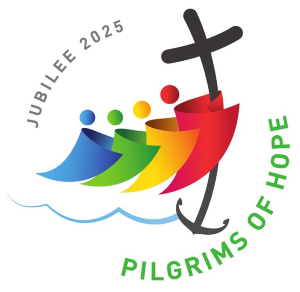Design and Technology
Overview
The Design and Technology Curriculum intends to inspire and nurture pupils’ creativity and innovation, giving them the opportunity to develop skills, knowledge and understanding of the design process, and to apply this through the creation of functional products.
The curriculum is split into three different areas: ‘cook’, ‘sew’ and ‘build’. It is designed so that each year group will complete a unit of work in these three different areas once a year. Two different ‘aspects’ of design are interwoven into the three areas of study: the environment and sustainability, and enterprise and innovation. These ‘aspects’ acknowledge enduring and contemporary concerns of modern design.
Pupils explore the practicalities of design, making direct reference to structures, mechanisms, and a variety of materials and foods; they are encouraged to consider important issues and implications to inform the choices they make when designing for purpose.
As children progress, they begin to think critically and develop more rigorous understanding of design and construction in order to evaluate and adapt their creations, basing their reflections in part on the design, structures and designs observed in the world around them. As their knowledge deepens, so too does their confidence to experiment, invent and create their own works of design.
Throughout the course of the lessons the students explore existing products and their uses, generate ideas and designs by creating drawings and prototypes against criteria which they devise having considered purpose, function and appeal. Evaluation against these criteria concludes the process. Discussion is an important part of this process, as is consideration of the properties of potential materials and the choice of tools. Learning about fundamental concepts, skills, developments in history and understanding of the influence of key individuals in the field are interleaved into this process-driven structure. The students’ understanding of key skills and concepts builds from year to year, assessing and cementing prior learning, and therefore the implementation of the curriculum in the given sequence is crucial.
EYFS: We teach Design and Technology in Nursery and Reception as an integral part of the topic work covered during the year and as set out in the Early Years Foundation Stage Framework under Expressive Arts and Design which underpin the curriculum planning for children aged three to five. We encourage the development of skills; knowledge and understanding that help pupils make sense of their world as an integral part of the academy’s work. This learning forms the foundations for later work in Design and Technology. These early experiences include asking questions about how things work, investigating and using a variety of construction kits, materials, tools, and products, developing making skills and handling appropriate tools and construction materials safely and with increasing control. We provide a range of experiences that encourage exploration, observation, problem solving, critical thinking and discussion. These activities, indoors and outdoors, attract the pupil’s interest and curiosity.
Year 1:
Autumn Term
Concepts : What is a recipe? Cooking from different cultures—England Sweet v savoury, cooked v raw A pie can be made with pastry Seasonality—preserving fruit for the winter
Skills: Following a simple recipe Measuring in spoonfuls Rubbing fat into flour Mixing Making, rolling and cutting pastry Baking Cooling
Spring Term
Concepts Process of design Vehicles: user and purpose Mechanical systems: wheels and axles Wheels and axles in everyday examples Structures and materials—strong, stiff and stable. Materials—properties and functionality Vehicles and pollution.
Skills Research and Investigate: Different types of vehicles, different parts of a vehicle, explore wheels and axles in toy cars Design: Understand criteria (user, purpose, function, appeal), generate/innovate/develop ideas, talking, drawing, labelling Make: Select tools/materials for making a toy vehicle with wheels and axles, cutting, different ways of joining decorating, finishing Use and Evaluate Car racing in the playground exploring speed, film/photograph children doing this, evaluation against criteria and existing products
Summer Term
Concepts Process of design Making products with fabric Properties of a range of materials Using suitable materials Fixing fabric together Reusing/recycling materials Features of a puppet Features of different animals
Skills Research and Investigate: Existing products Design: Understand criteria (user, purpose, function, appeal), generate/develop ideas, talking, drawing, labelling Make: Select tools/materials, making paper templates, drawing/cutting shapes, gluing, joining fabric, drying Use and Evaluate: Recording of children using puppets, evaluate against criteria.
Year 2:
Autumn Term
Concepts Spices, spicy/sweet History of food, food transport and cost of ingredients Decoration Cooked v raw Baking
Skills Following a simple recipe Measuring using spoons Chopping, Mixing Rubbing fat into flour Cracking an egg Making a dough, rolling, cutting Baking, cooling, decorating
Spring Term
Concepts Process of design Mechanical systems: levers and sliders Levers and sliders in everyday examples Structures and materials to make levers and sliders in moving pictures strong, stiff and stable.
Skills Research and Investigate: Levers and sliders, examples of what products which used these: see saw, scissors, hammer, wheelbarrow, shaduf, research examples of moving pictures Design: Understand criteria (user, purpose, function, appeal), generate/innovate/develop ideas, talking, drawing, labelling, creating a mock up Make: Select tools/materials for making a moving picture with levers and sliders, cutting, different ways of joining decorating, finishing Use and Evaluate: Photograph pictures, evaluation against criteria and existing products
Summer Term
Concepts Process of design Features of a pencil case—size, materials, fastenings, shape, joining, decoration Using suitable materials Properties of different materials Making products with fabric Join fabric together—sewing and gluing Creating stiches with a needle and thread.
Skills Research and Investigate: Existing products Design: Understand criteria (user, purpose, function, appeal), generate/develop ideas, talking, drawing, labelling Make: Select tools/materials, making paper templates/ patterns, drawing/cutting shapes, threading a needle, tying a knot, running stitch, sewing on a button, gluing on decoration Use and Evaluate: Photograph pencil cases, written evaluation against criteria











